Left hookers are ok + Black A9X hatch + fan blade facts - Morley's Workshop 426



|
Red-motored EJs, left hookers are ok, Black A9X Torana hatch and fan blade facts
MORLEY'S WORKSHOP
Exhibit A
Publishing, they say, is an imprecise pursuit. Well, it is when it’s practised by the galoots that run this fine, family magazine.
If you read this column in last issue, you’ll know that we were all breathless about finding something approximating proof that an EJ Holden did escape the factory with a red motor under its lid. And we even had the picture that amounted to that proof. So, having written my piece for last issue, I then sent the pic into the magazine’s office, along with a couple of other incidental photos.
Those other photos really didn’t matter, but the yarn I wrote referred at length to the one crucial photograph that, like I say, told the story. So guess which pic got left off the page? Yep, you couldn’t make it up. Okay, when it comes to making magazines on a tight deadline and an even tighter budget, shit is going to happen. But why, oh why did it have to happen to the reveal of the century?
Anyway, no use blabbering over spilled 20W50, this time you’ll see the correct pic on the page. The keen-eyed will also have noticed that the drawing, taken from a Genuine Holden Workshop manual for the EJ/EH models (the book even has a Holden part number) appears to show a red motor being lifted out of an EJ engine-bay.
Here’s what I’m seeing: The ribbed rocker cover and position of the breather-cap tells me the engine is a red motor. But the split-cowl-vent (below the wipers) makes me think this is an EJ Holden because the EH had a full-width cowl-vent. The point being that if an official, genuine Holden workshop manual can include an illustration of such a thing, then maybe, just maybe, the red-motored EJ was a real thing.
It strikes me that since the book is a manual for the EJ model and includes a supplement for the EH it could have been published around the time that the EH was brand-new. Or about to be released. And that was precisely when Holden – if it ever did – fitted a handful of EJs with red motors after the stockpile of grey motors ran out.
I await your correspondence.
HERE'S MY TIP:
Clean yp your act

When you’re getting the dreaded roadworthy certificate for your latest money pit, do yourself a huge favour and clean the junk out of the car. You know the stuff; the little bags the spare parts came in, the empty fuel-filter box, the rags and Maccas wrappers. And, of course, the empty beer cans from the most recent working bee on the car. Nothing makes a worse first impression on a roadworthy inspector than having to shovel somebody else’s rubbish out of the way to get to the bonnet catch.
LETTERS
Left-Hook Horrors
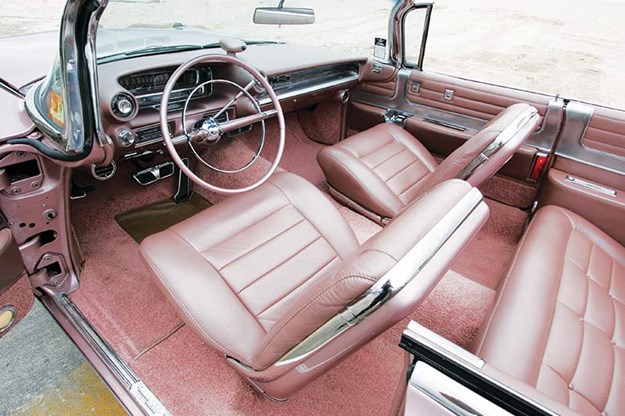 This rare 1959 Cadillac Eldorado Biarritz was once converted to RHD at the cost of £10,000! It was then converted back to LHD when the car was restored
This rare 1959 Cadillac Eldorado Biarritz was once converted to RHD at the cost of £10,000! It was then converted back to LHD when the car was restored
You really are a bunch of pussycats over there in the eastern states. All this lamenting in a recent issue of Unique Cars over left-hand-drive and how it drives down the price of vehicles. It may drive them down because of the attitude of enthusiasts who are not prepared to enjoy the car in the manner it was constructed.
I don’t know why you would not look forward to driving a left-hook car as one of life’s experiences; at least enough to counter the day-to-day hassle of driving to and from work on the "correct" side of the car. At least you get it, Morley.
By far the majority of cars in the world are built in LHD and these included many of the classics coming out of the USA that you have highlighted in Issue 424. These cars were designed and built as left-hookers, why change that? Why re-engineer a proven concept? It is vandalism.
Of course, I am only referring to older vehicles as there is an industry converting newer models (because they have to by law). Here in WA, we’ve long had a more tolerant set of rules in relation to LHD and it is clear that locally you don’t see too many Yankee cars having been converted when you look around at car shows. So get with it and enjoy the car as built.
I wonder if folks who insist on only driving a RHD car were lucky enough to own the Mona Lisa, would they demand it be re-painted so the lovely lady was glancing in another direction.
Bob Wall,
WA.
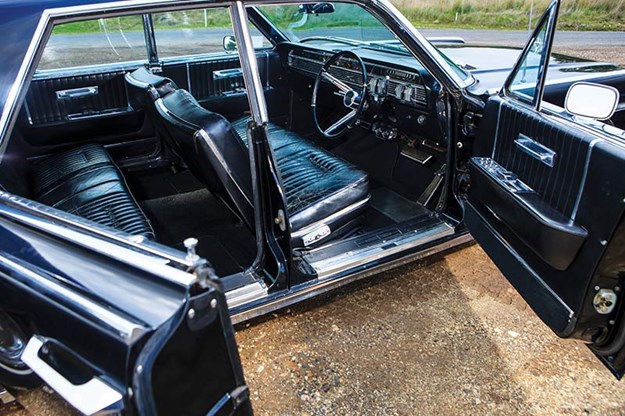 Jim Hargrave’s 1964 Continental was imported in-period by Ford Australia and then used by either Bill Bourke or a young Kerry Packer. It was converted to right-hand drive by Sydney’s Buckle Motors
Jim Hargrave’s 1964 Continental was imported in-period by Ford Australia and then used by either Bill Bourke or a young Kerry Packer. It was converted to right-hand drive by Sydney’s Buckle Motors
I REALLY AM with you on this one, Bob. I just can’t see the point in spending a whole bunch of money on converting a car from left to right-hand-drive when the law says I can enjoy it as a left-hooker. Interesting, too, that it’s WA that has had a relatively lenient view of left-hand-drive over the years. I think I recall that the Northern Territory has a similarly enlightened view of driving a left-hooker and I’m pretty sure somebody once told me that it was because of all the US servicemen based at Pine Gap had brought their cars with them and the government made a few changes to the Traffic Act to accommodate them.
New cars, many of which are designed as either left or right-hand-drive, can often be converted successfully because the factory parts are there to be had. That said, why not just import a right-hand-drive example from a market in which they were sold new?
Of course, a lot of US cars are still made only in LHD (and let’s not forget that it wasn’t until 2015 that the Mustang was designed with right-hook in mind.) That’s where OEM quality parts in the conversion come in. A great example is the conversion of Ram Trucks in Melbourne from left to right-hand-drive. The people doing it have been very careful to re-use as many factory parts as they could and when they couldn’t – for instance with the steering box – they commissioned the Stateside mob that built the left-hook steering box to manufacturer a mirror-image job.
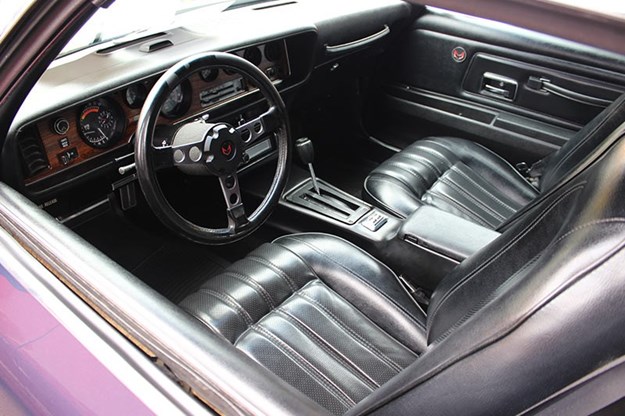
But a lot of older cars don’t take to the conversion process quite so easily. Yes, there are mobs like Crossover Conversions (also in Melbourne) that can turn out factory-spec stuff, but it’ll still cost enough to keep your old left-hooker in petrol, tyres and insurance for many years.
And don’t even start me on the subject of dodgy old-school conversions done in backyards in the bad old days. Things like the steering box staying on the left and being joined to the new, right-hand steering column via a pair of sprockets and a push-bike chain! Or the brake master cylinder staying put on the firewall and being linked to the new brake pedal by a metal rod running across the width of the engine bay. Keeps me awake at night just thinking about it. And how they ever got through an engineering inspection remains one of the universe’s great mysteries.
Sometimes, even a car designed for both left and right-hand-drive is best left unconverted. The original Porsche 911 is a great example. Even if you use 100 per cent factory parts, the end result will not be as ergonomically good as a left-hand-drive example thanks to the way the pedal placement is compromised. The same thing happens even in a factory right-hook Porker. So maybe there’s a case for conversion after all…ironically, from right-hand back to left-hand-drive.
Meantime, since the demise of the toll-booth where you chucked your change (in favour of electronic tags) I can’t really think of a single reason why left-hook isn’t absolutely viable. Except maybe for the fast food drive-through which is still set-up for right-hand-drive. But in any case, shouldn’t you really get off your backside and walk into the shop for your lard-burgers and bacon-tots?
Dark forces
 200km/h top speed in an A9X Torana? Well it convinced the legislators, even if it fooled nobody else
200km/h top speed in an A9X Torana? Well it convinced the legislators, even if it fooled nobody else
Well that was a pleasant shock to buy my favourite mag and see the photo of my A9X Hatch. I hope you all enjoyed it. I was not expecting for it to progress to print, I just hoped Morley would enjoy the fact that black can be great to look at on car certain shapes. Obviously with the right amount of contrast such as chrome and colours that balance it all such as the gold V5 Simmons.
It might also entertain you, Morley, to know it is a genuine black A9X hatch, which as a result I hope you can understand makes me a bit cagey about putting it out there. Having owned it for more than a quarter of a century, the whole story is kind of like war and peace. Like every car nut, you pay, bleed and bend over for the good old rogering from time to time when pouring your passion into an obsession.
This car came into my possession desperate for love and a massive cash injection at the start of the 90s. I had come to Adelaide from Whyalla to look at a red A9X hatch with brown interior but the owner spooked and everything fell through. It was at this point I was made aware of this black one. Yeah it was running but had given its best a long time ago and had been thrashed into near non-existence. As we all know it is just an unexplainable thing, you seem to be able to look past it all and see something there and say yes, knowing you should say no. I didn’t even drive it at the time as the registration had lapsed.
So after a trip to the local registration office for ownership handover and re-registration, I drove it back to Adelaide from where I bought it. When I arrived in Adelaide I wound down the driver’s window which promptly dropped into the bottom of the door. And then it rained. Some would say there was something in that.
When I drove it back to Whyalla I stopped at every service station as the fuel gauge dropped to half after only 100km. I later discovered Holden’s bloody gauges were notorious for this at the time and I still had three-quarters of a tank when the needle was on half. Stupid Fords I have owned work the other way. My father in Whyalla, also a car enthusiast, just scratched his head before walking away bemused. I paid almost double for what a mint genuine 5.0 SS hatch was worth and he could understandably not see the wisdom in my purchase. Basically he thought it was a massive black hole into which one throws good money. To this day I refuse to add up all the money I have spent.
You may not be aware but Whyalla had at the time a very healthy car scene with a quarter-mile drag-strip, dirt-circuit track, speedway facilities and a strong street-car culture. Driving a Torana was right up there, particularly as it was black, V8, manual and had the fats to fill the flairs. Now, this thing is factory fitted with the moon shot 2.6 diff ratio, you know the stupid gearing that can exceed the highway speed limit of 110km in first gear. So it didn’t (and still doesn’t) like city driving. The highway was where it stretched its legs and stretch them it could without a sweat.
Back then I had an insurance cover note for one month, so it was driven until the cover note run out and then the 20 year plus rebuild started. Oh, and Morley; this is one of three black cars fate has forced on me. The attached photo I took one morning in the Adelaide hills. Some people are real sticklers for obeying road rules and no it wasn’t me; my tyres are too wide and close by comparison and there are no Aussie M21 internals spread all over the road.
Tony Dark,
Email
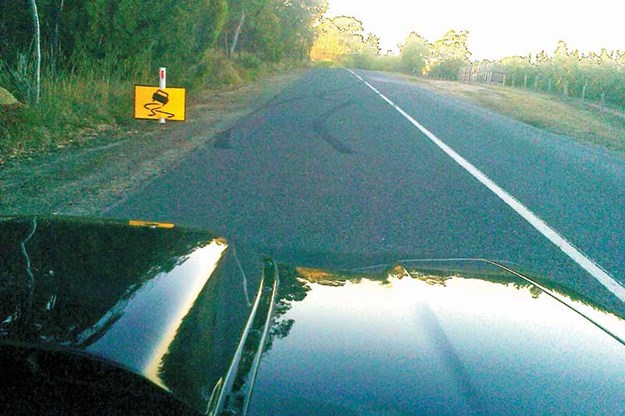 We can’t help but wonder if the sign was there first, or put there as a warning
We can’t help but wonder if the sign was there first, or put there as a warning
GREAT STORY Tony and I like your take on the fact that somebody travelling that road just outside Adelaide before you decided that obeying the road signs was an important part of being a good citizen. I reckon most blokes who have owned a single car for 25 years or so would also have a fair bit of skin in the game financially, so don’t sweat it; you’re among friends. But you didn’t mention whether your dad finally came around to the Hatch and accepted its obvious charms.
That l-o-n-g gearing might have been a pain around town, but it must have been lovely out on the long, lonely stretches around Whyalla where the V8 could really get into its stride. A lot of Aussie cars over the years have featured tall gearing, culminating around the turn of the century with the first Gen 3-powered Commodores with the six-speed manual. With a double overdriven sixth gear (0.5:1) these things were turning over at 1500rpm at 100km/h. That gave them a theoretical top-speed of about 366km/h (based on the 5500rpm redline). But back when your Hatch was built, the average Holden with a red six was still geared for about 3000rpm at 100km/h, or the good old yardstick of 20 miles-per-hour per 1000 revs.
I don’t think I’ve ever owned a Holden or Ford that had an accurate fuel gauge, but if I had to choose, I pick the one that reads pessimistically. Much less chance of being stranded in the middle of the mulga with a dry tank that way. In any case, years of riding motorbikes most of which didn’t have a fuel gauge of any sort (accurate or not) has taught me to get a feel for how far I can go on a tank and then re-set the trip-meter every time I fill up. It’s a habit I still practice, but I reckon it’s a pretty good one. Especially since the gauge in the MBC staff car takes the first 200km to move off full and then plummets towards empty like a hawk diving on a mouse.
The loopiest fuel gauges I can remember were in Alfas from the 1980 and 90s. These things seemed like they didn’t have a damper on them, so the needle would stagger around the face of the gauge like a drunken compass, wobbling about in sympathy with whatever the contents of the tank were doing at that precise moment. Turn into a left-hander and the gauge dropped, turn right and you were suddenly making new petrol.
And these were test cars; brand-new vehicles that had been meticulously prepared before being loaned out to we journos. So, despite never having owned one, I know a bit about elderly Alfas. It has often been remarked that you can only ever be called a true car-guy if you’ve owned an Alfa Romeo. I have another word for folks who own Alfas from this era: `Pedestrians’.
Weighing in on fan blades
 Gustav Lilienthal, pioneer of human aviation, younger brother Of Otto
Gustav Lilienthal, pioneer of human aviation, younger brother Of Otto
You and Kev are indeed correct, Morley, and it is Mr Smith, BSc (Physics), BE, who is the idiot. The giveaway is that he spruiks himself as being both a scientist AND an engineer!
Anyway, fan blades work as wings, and most wings have an "arcuate" cross-section, or an "arc-like" profile with concave and convex sides as you noted. It is well known that such arcuate wings work much better when moving the air in the right direction, but not at all well when moving the air the wrong way. That is, the concave side should push, while the convex side pulls the air. But rather than go into the intricacies of the aerodynamics of such devices, it is perhaps more interesting to look at the history of this discovery.
In the early days of the study of heavier-than-air flight, say from the Renaissance until the late-1800s, the word "aeroplane" referred to the wing itself, and not the whole aircraft. And as "plane" suggests, such wings were always simple flat plates. Theoretical studies suggested that such flat-plate wings were not feasible for human-sized flying machines, and practical experiments confirmed their poor performance.
Fortunately, two farm boys, Otto and Gustav Lilienthal, disagreed with this pessimism. They were determined to fly! So, starting in the 1860s they began numerous experiments on different types of wings. And by the mid-1890s, 30 years later, they had managed over 2000 successful gliding flights in aircraft resembling modern-day hang-gliders. Sadly for Otto, while his last flight in 1896 started well, his last landing was less successful. But, again fortunately, Otto had already published most of his and his brother’s findings in 1889, in the small book "Birdflight as the Basis of Aviation".
The key breakthrough found in this book is that Otto and Gustav did not look only to flat-plates for wings, but also decided to look to nature for clues. Being farm boys they often had storks nesting in their barn, so they looked to the stork as their muse. See the book for their beautifully drawn sketches of stork wings, and for their experimental results that showed how much better the arcuate-profile, stork-like, wings were, compared with the old-fashioned flat-plates. Their book is a true classic in that it showed how to get the leap in efficiency that was necessary for practical manned flight. Namely, make the wing profile curved, not flat, and make sure you curve it in the right direction! Or in terms of fan-blades, make sure the curve matches the direction you want to shift the air.
The Lilienthal book became inspiration to other like-minded farm boys, such as the Wright brothers, and the rest, as they say, is history. But will scientists and engineers like Mr Smith ever learn anything from nature, and thus make such big leaps? I doubt it. Methinks the really big breakthroughs only ever come from the farm boys.
Incidentally, the usual "tear-drop" shaped wing profiles seen on most modern aircraft work LESS well than thinner arcuate profiles. The reason modern aircraft wings have the fatter tear-drop profiles is that humans are not as good structural engineers as is nature, so they have to make the profiles fatter to avoid too much flex, or worse yet, breakage. The fat wings also provide a conveniently large volume to store fuel, which is useful given the bellies of these tin birds are usually full of fat tourists.
I am not sure if it was in your august journal that I read, some time ago, discussion about cars with "reverse-rotating" engines? If so, then I have a few such cars out back, awaiting resto, and can explain why their designers went that way. Makes sense, really.
Grumpy Z, HOG (Hairy Old Guy)
email
OKAY, LET ME just back-track a little for those who came in late. A few issues back I had a letter suggesting I was an idiot because I couldn’t see that simply reversing the direction of a cooling fan blade would reverse the flow of air. I argued at the time that if a company like Davies-Craig wanted me to flip the blades 180-degrees AND reverse the direction of a thermatic fan to turn it from a pusher to a puller, that there must be some science behind it. And then I get this beautifully written explanation from you Grumpy, that proves me and Kev, the bloke who first alerted me to this phenomenon, were right.
Now, I’m nowhere near as clued up on this as Grumpy, but I have heard of the Lilienthal brothers and their early attempts at building a human-sized glider. In fact, I remember as a kid my brother had one of those books that taught you to read by letting you to follow the words on the page while listening to the same words narrated on a little, floppy 45rpm record that was stored in a sleeve at the back of the book. Anybody else remember them? Anyway, one of the chapters in the book was all about the Lilienthal brothers. Well, a version that would appeal to illiterate kids, anyway. So when you mentioned the name, Grumpy, I was taken way, way back to my childhood. Point being, that you’re right; the kid’s reader didn’t go into the arcuate shaping of wings, but it did mention that Otto had one more take-off than he had landings. This particular fact was probably of more interest to a kid like my brother who, though lacking literacy skills at that stage, was more than prepared to jump off the roof of the chook-shed with an umbrella as a glider. The bit of Grumpy’s info I was truly ignorant of, though, is that the teardrop-shaped wing of modern planes is more to do with strength and fuel storage than aerodynamic efficiency. And that’s one of the things I love about writing this column; it’s pretty rare that I don’t get a `well-bugger-me’ moment from you lot.
So thanks for the info Grumpy and I hope that’s cleared up a lot of misconceptions. And when somebody does a social study and discovers that grey-bearded Aussie men have a three times better understanding of aerofoil shapes than their counterparts in France or Spain, we can all point to this magazine and be proud.
Meantime, Grumpy, I’d love to know about your contra-rotating car engines. Partly because it’s interesting stuff, but also to absorb more of your lovely writing. Did you ever, by any chance, jump off a chook-shed roof? Strikes me as the sort of thing a farm-boy would do.
Gawd-ini mystery solved
 Hickey’s Gordini boasts a pretty complete set of engine gauges but where’s the Halda Tripmaster?
Hickey’s Gordini boasts a pretty complete set of engine gauges but where’s the Halda Tripmaster?
Peter Hickey wanted to know the name of the enthusiast from whom he bought his Renault R8 rally car in 1978. Discussions within the Renault Car Club established that it was Chris Hebbard, at that time working for Tony Applebaum (not Applebone) in Mosman. One of Chris’s jobs had been as service manager of E and A Motors in Crows Nest.
The R8 built and maintained by Chris was a rip snorter of a car fitted with a 16TS engine, seriously hot-rodded with a Cosworth cam and many other modifications. Chris is the one on the right in the photo, with the beard. The driver is Bruce Kops. Chris is no longer a member of the Renault Car Club but club stalwart Bob Sprague tracked him down. Chris says he may be interested in resuming ownership. Chris and Peter Hickey are now in touch.
Andrew Moore,
Email
HEY ANDREW, thanks for answering a few questions about this car and for acting as go-between to hook the two parties up. I’m just waiting to see now who ends up buying the car; apparently Chris’ mates have all been telling him to buy it back. Not sure what will eventually happen, but somebody is going to wind up with a piece of dead-set rallying history.
It all goes to show that it really is a small world out there when a random letter in a car magazine can reunite a bloke with the car he built and raced four decades earlier. Either that or Unique Cars is the most powerful publication in the world. Yeah, I’ll go with that.
Concrete warranty follow up
 While looking like an ice cream seller, he’s actully flogging batteries
While looking like an ice cream seller, he’s actully flogging batteries
Hey Morley, Mythbusters tackled the question of sitting batteries on a concrete floor years back on one of their episodes. Something about positive and negative ions in the concrete that discharge the battery. I’m a big believer and I’ve known a few people who’ve stored batteries on concrete with similar results… dead flat and resistant to charge.
Chris,
Email
FOR EVERYONE who reckons that sitting a battery on concrete won’t hurt it, someone else is adamant it will be fatal.
Anyway, Chris, although I couldn’t find the Mythbusters episode, I did find other interesting stuff on the subject. Not least that while modern batteries aren’t susceptible, the theory was based on a real issue back in the day.
Seems early batteries were encased in everything from timber, to rubber and even paper. Any hint of moisture in those cases could allow leakage from the battery which would leave it dead. Condensation on cold concrete helped the process along. With wood, less so.
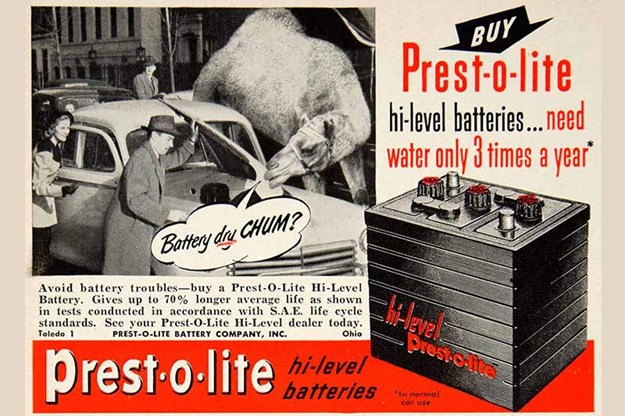
The theory continues that with the widespread adoption of plastic battery cases, the problem disappeared. Certainly videos on the web purport to show independent tests where there’s no difference in battery degradation regardless of where the thing has been sat for the duration of the test.
But here’s the real twist: Some folks now reckon that a concrete floor is the perfect place to store a modern, plastic battery.because a few inches of concrete reduces temperature swings in the battery, preserving it.
Me? I’m still gonna keep my batteries on a lump of wood. Maybe I’m wasting my time, but I’m like the bloke on the Sydney bus with a can of elephant repellent. There are no elephants in Sydney, says the fella next to him. Yep, works well, doesn’t it.
TRIVIAL PURSUIT
Le ambush, le fail
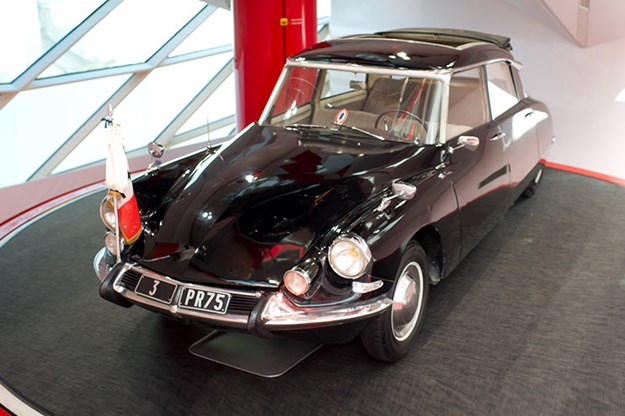
Our vote for the most patriotic car ever made must go to the Citroen DS. In 1962, French President Charles de Gaulle was riding through Paris when a dozen armed thugs pulled alongside and emptied 140 shells into the DS. Somehow the Citroen protected de Gaulle and his driver. Two motorcycle-mounted security guards were not so lucky. Despite taking dozens of hits and losing more than one tyre, the DS’s hydro-pneumatic suspension is credited with levelling the car and allowing the driver to maintain control and make a getaway.
Red bikini runaway

A reader named Richard mentioned the old ABC TV series Sweet and Sour to me. Anyone care to guess the car connection with this telly show? Okay, two of the creators of the show were Tim Gooding and Johanna Pigott and they were in a band called, wait for it, XL Capris. Well done if you picked it, bonus points for anybody who remembers the XL Capris’ single, Red Bikini Runaway. Google it, it’ll take you back. The song is about a teenage Russian defector who jumped off a ship into Sydney Harbour in 1979 (yeah, in a red bikini). But why an Aussie post-punk band would name themselves after a Pommy two-door Ford is the real mystery.
Write to Morley c/o uniquecars@primecreative.com.au or Unique Cars magazine, 379 Docklands Drive, Docklands, Victoria 3008
Unique Cars magazine Value Guides
Sell your car for free right here
Get your monthly fix of news, reviews and stories on the greatest cars and minds in the automotive world.
Subscribe

.jpg)









.jpg)



